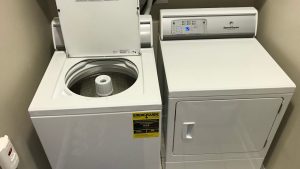Laundry is a fact of life, and in addition to your effort, it requires resources to get all those clothes clean and dry. In electricity alone—to say nothing of water—Americans used 10 billion kilowatt-hours washing laundry at home last year, and 60 billion kilowatt-hours drying it. Did you know around 10% of a home’s total electricity use goes to washing and drying clothes? Over the past two decades, increasingly tough federal regulations have required manufacturers to make washers that use significantly less energy and water. Improvements in efficiency include increasing the tub’s spin speed to extract more water from laundry, which in turn cuts the time required by the dryer. Heat-pump dryers are the most energy-efficient option. A heat-pump dryer extracts heat from a room’s air and uses it to heat the air in the dryer. A conventional electric dryer relies on a heating element. Some dryers use both technologies and are known as hybrids. Energy Star says heat-pump dryers use 20 to 60 percent less energy than conventional dryers. But heat-pump dryers are expensive—and slow!
Here are some ways to help reduce your electricity when washing and drying laundry.
Washing Machines: ~ Opt for cold water when you can ~ Increase the spin speed ~ Use high efficiency (HE) detergent ~ Avoid the sanitary cycle Dryers: ~ Clean the lint screen ~ Clean the dryer duct regularly ~ Try line-drying ~ Use the automatic cycle instead of timed drying ~ Dry similar items together.
